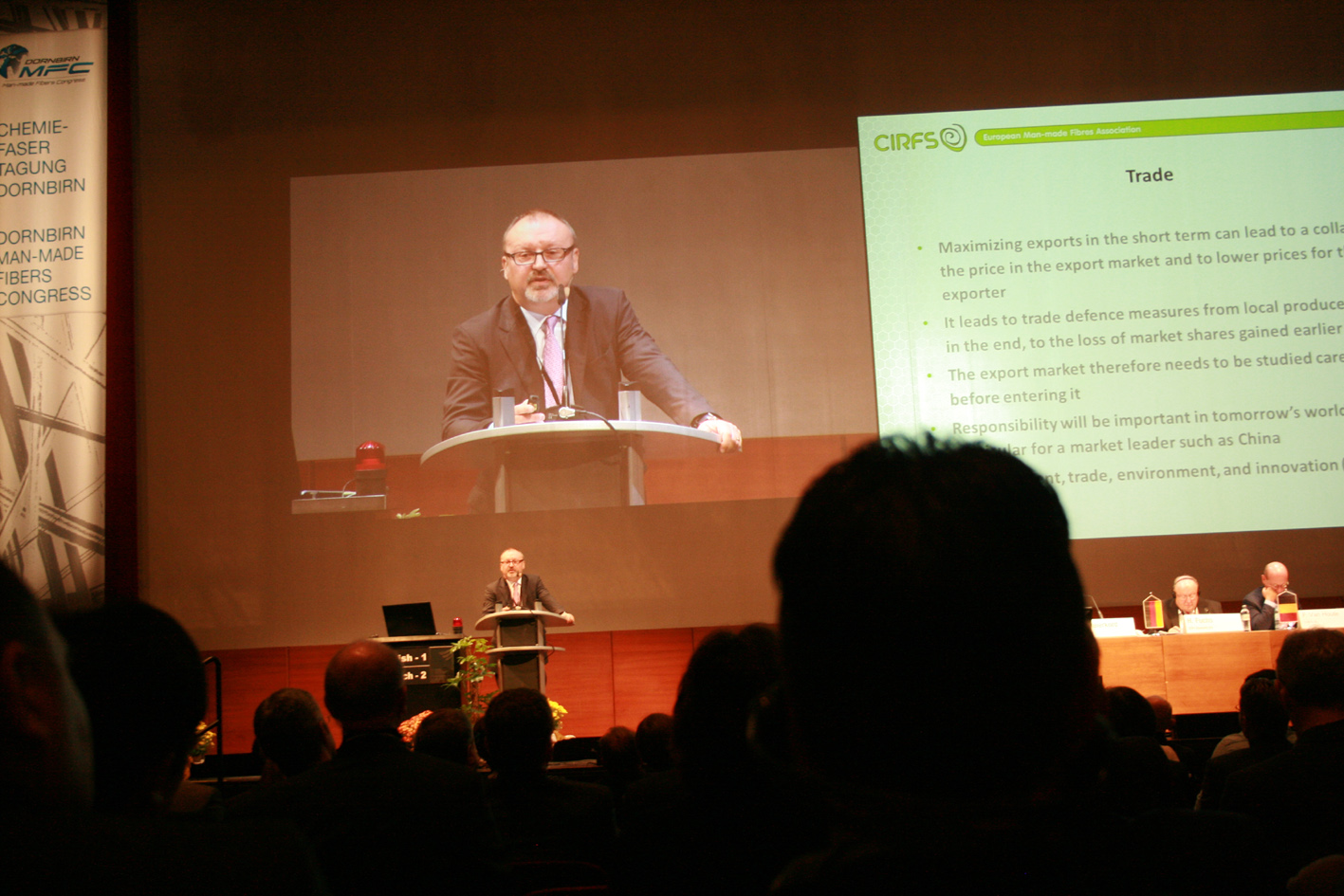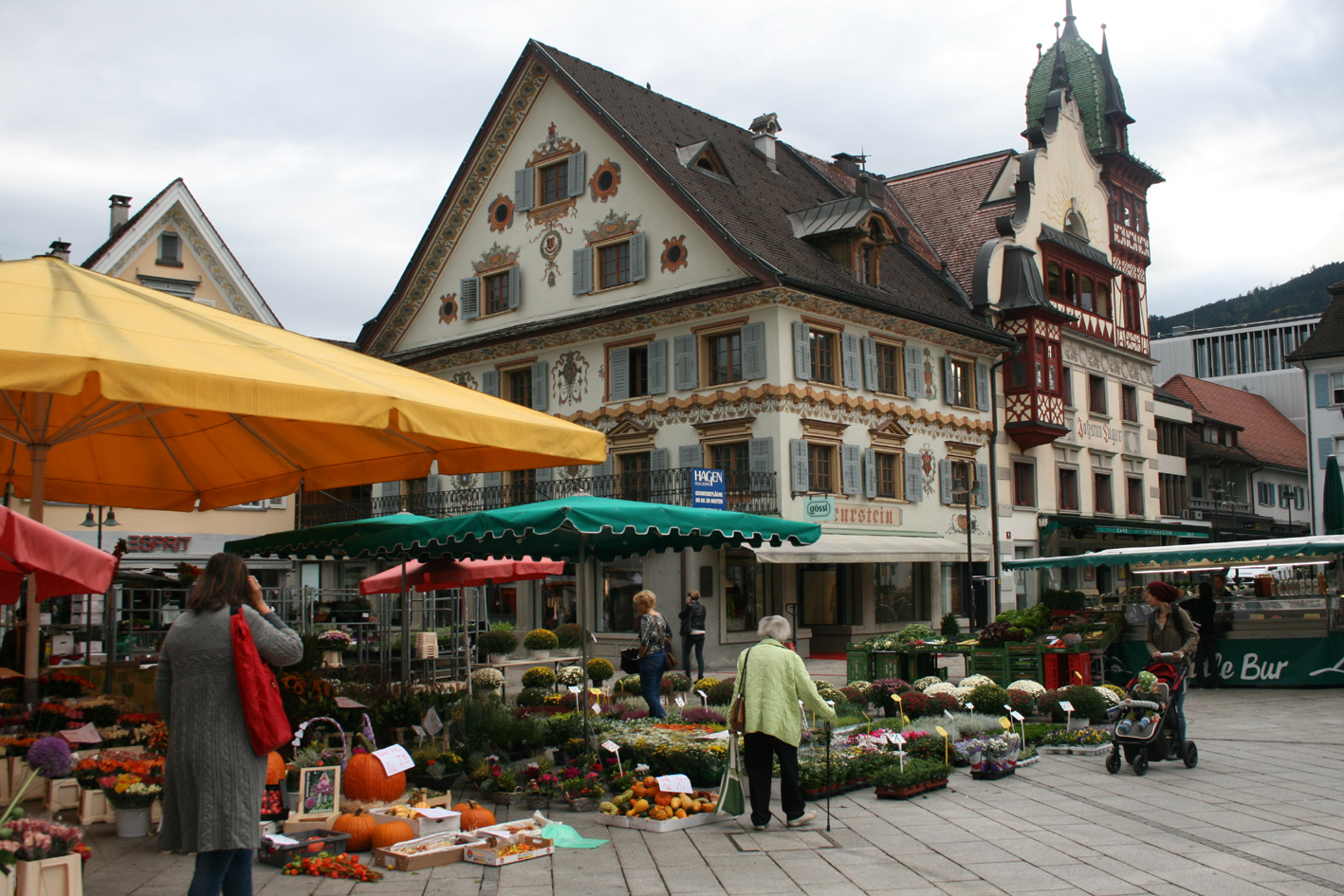
IME: A complex field with high potential
Opinion


It’s clear that a key focus in R&D in Germany is on the push to move carbon fibre composites into the mainstream automotive sector.

30th September 2015
Adrian Wilson
|
Dornbirn
While developments in cellulosic fibres were high on the agenda at this year’s Dornbirn Manmade Fibres Conference (MFC) – with Lenzing being the event’s major sponsor and Kelheim Fibres also heavily involved – a significant percentage of the 100+ papers presented focused on carbon fibre recycling.
In addition, there were some very interesting projects going on around the world with polyester touched upon – and perhaps for equally urgent reasons.
This year’s conference – the 54th – took place from September 16-18 in Austria, again attracting over 700 delegates from 32 countries.
It’s clear, and hardly surprising, that a key focus in research and development in Germany – both by companies and research and education institutes – is focused on the push to move carbon fibre composites into the mainstream automotive sector,
There were details of heavily-funded projects presented in this area from the institutes and clusters in, among other German centres, Aachen, Denkendorf, Dresden and Rudolstadt, as well as others from Austria, Belgium and Switzerland.
It was a little ironic then, that given the key motivation of all this endeavour is lightweighting and reducing emissions, the Volkswagen scandal should be breaking in the same week, and is a saga likely to continue to unfold in the months ahead.
Nevertheless, it has been estimated that for the production of around 1,000 planes a year, the total amount of carbon fibre composites required is 50,000 tonnes, based on an average of 50 tonnes going into each plane.
However, if even just 100kg of the same materials were to be employed in the annual 100 million cars now being built each year, the demand would be 10 million tonnes.
At this stage, it’s not clear where all of this product is likely to come from, nor where it will go at end-of-life, but given the high value of carbon fibre and the anticipated rise in production volumes of composites based on it, it’s hardly surprising recycling has become a key issue.
New carbon fibres cost upwards of £10,000 a tonne – about ten times the cost of glass fibres – which further explains why the supply chains for sourcing, gathering and processing carbon fibre-reinforced composites are at a much more advanced stage than those for glass or other fibre-based materials, especially in Germany.

There are currently, for instance, 11 separate large-scale projects currently being undertaken in Germany as part of the huge Mai Carbon initiative. Its goal is to establish a complete recycling process chain for reject composites, complex mixed materials and reprocessed carbon fibres suitable for re-use in various applications.
Commercial processes for recycling the carbon fibre from composites are emerging rapidly and many recycling projects have centred on a partial pyrolysis process, where the resin matrix is burned off with limited oxygen.
MAI Recycling, meanwhile – which brings together the companies Audi, BMW, SGL Carbon, Neenah-Gessner, Siemens and Voith Composites with the Fraunhofer Institute for Building Physics and the environmental institute BIFA – has resulted in the so-called ‘solvolytic’ recycling method for which a patent is now pending.
In the solvolytic process, the resin component is heated under pressure at a temperature of 200°C and converted to low molecular-weight soluble alcohols with the aid of water. No environmentally-damaging solvents are used in the process, which also requires much less energy than would be required to manufacture new fibres.
All of these developments were bubbling in the background in many of the papers presented at Dornbirn 2015.
There is also perhaps a similar urgency to what’s required in China with polyester (PET).
Speaking at Dornbirn 2015, Heinz Meierkord, CEO of Advansa and president of the European manmade fibres association CIRFS, spoke of the dangerous over-capacities that have been built up in China in PET fibre production.
There were 66,000 tons of PET produced in 2014 and China now accounts for 73% of global capacity, with 25% of it being overcapacity requirement at present.
This, declared Meierkord, is “frightening and unsustainable” – representing three times the total polyester staple fibre consumption of Greater Europe at present – and nine times its consumption of filament.

“China is making millions of tonnes of product that the world doesn’t need,” he said. “The environmental consequences are beyond belief and it can’t continue.”
There were noticeably, no Chinese producers of polyester at Dornbirn 2015, which made the debate a little one-sided.
One clue as to what might be happening there, however, was provided by Alex Kedo, of Shanghai-based Cathay Industrial Biotech.
While polyester overcapacites may anger the industries of other trading blocks, it’s hardly a situation China’s government is happy about either, and attempts are being made to restrict investments in further capacities until a degree of readjustment has been achieved.
Efforts are being made to find new end-uses for the country’s excess polyester capacities and the most obvious one would be as a substitute for cotton, which at times is in short supply in Asia.
Can polyester be sufficiently modified via biotechnology to rival the winning properties of cotton?
“We can do things that chemistry cannot,” promised Kedo, “and on a commercial basis. We have dozens of optimised enzymes and continue to improve cycle times and yields for products.”
He alluded to China’s ambitious ‘Super Imitation Cotton Project’ and the development of Terryl, a new cost-competitive and bio-based polyamide for textiles.
Cathay has developed a range of new polyamides and sees a major opportunity for Terryl PA56 based on 45% renewable (corn) content, due to the significant benefits it can bring to textiles.

Amongst them, its lower viscosity at high shear allows for easier spinning and a higher moisture absorbance leads to more comfort. It also dyes better and at lower temperatures than either PA6 or PA66.
Terryl is also inherently flame retardant – Cathay is not yet quite sure why – and these advantages combined have now attracted the attention of China’s military.
US Army and NATO uniforms are based on a 50/50 blend of PA66 and cotton, while Chinese Army uniforms are currently polyester, possessing significantly less comfort and poor wear performance.
Consequently China’s military has provided funding for a key project, initially involving 20,000 tons of Terryl, to develop more comfortable military uniforms.
If successful, this could lead to significant business in the supply of raw materials for uniforms to equip what is a two million-strong organisation.
Going further, as part of the Super Imitation Polyester Cotton Project, Cathay has already been able to pair its Terryl PA56 with a polyester copolymer, since unlike with PA6 or 66, the melting points are the same.
Initial tests have been extremely promising, the company says.
And all of this, without even mentioning the exciting progress that is being made with biofibres and their polymers, as the key to “biologising the chemical industry”...

Business intelligence for the fibre, textiles and apparel industries: technologies, innovations, markets, investments, trade policy, sourcing, strategy...
Find out more